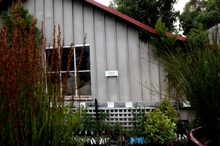
Click on the species name to get further information about the plant. There are also links to images and distribution maps.
The prices shown are for plants in tubestock - 50 mm forestry tubes or 75 mm round pots. Larger sizes are available for many species.
| Species Name | Common Name | Description | Price |
|---|---|---|---|
| Gahnia grandis | Cutting Grass | A vigorous sedge to 2 m high and wide with long, arching glossy green leaves. Warning: Leaf edges are serrated - best planted away from pedestrian areas. Thrives in moist and wet sites. Images Distribution Map |
|
| Gahnia rodwayi | Cushion Grass | A small, cushion-forming sedge to 20 cm for dry sites. Images Distribution Map |
|
| Gaultheria hispida | Snowberry | Endemic Tasmanian shrub to 1m, with tiny white bell flowers in spring, followed by plump extra-white berries in summer. Temperamental, but delightful. Needs a moist, cool, well drained spot. Images Distribution Map | |
| Gaultheria tasmanica | Tasmanian Waxberry | Slow, prostrate plant endemic to Tasmanian mountains. Tiny, shiny red berries. Prefers a cool, moist spot or pot. Images Distribution Map | |
| Goodenia elongata | Creeping Goodenia | A vigorous, spreading, suckering groundcover, with rich yellow flowers on stems to 10cm in summer. Can be invasive. Images Distribution Map | |
| Goodenia lanata | Prostrate Goodenia | A prostrate, suckering groundcover with yellow flowers in spring. Images Distribution Map | |
| Goodenia ovata | Parrots Foot | Very quick growing shrub to 1.2m. Good for moist and shade. Yellow flowers. Responds well to light or heavy pruning. Images Distribution Map | |
| Goodia lotifolia | Golden Tip | Fast-growing, bushy, bright green shrub to 2m. Can sucker. Bright yellow pea flowers in spring. Images Distribution Map | |
| Goodia pubescens | Silky Golden Tip | Similar to Goodia lotifolia, but with pubescent (hairy) stems. Fast-growing, bushy, bright green shrub to 2m. Bright yellow pea flowers in spring. Images Distribution Map | |
| Grevillea australis | Southern Grevillea | The only Grevillea species to occur naturally in Tasmania. Many different form occur from the coast to the mountains, with quite marked differences in the leaves and growth habits. All, however, have tiny white scented flowers, pollinated in the wild by native bees. Hardy in most conditions and soils. Images Distribution Map | |
| Grevillea australis | Grange Rd Form | An upright form with pointed leaves. Comes from a dry site in eastern Tasmania, so is a good plant for low-water gardens. | |
| Grevillea australis | Hollybank Form | A spreading form to 1 m hgih with rounded leaves. | |
| Grevillea australis | Prostrate Form | A low, spreading, fine leaved groundcover to 15cm high by 1.5m wide. Very tough. | |
| Grevillea australis | Spreading Form | A hardy shrub to 50cm high by 2m wide. Also very tough. | |
| Grevillea australis | Upright Fine Leaf form | An upright form to 2 m with very fine leaves. | |
| Grevillea australis | Upright Large Flower form | An upright to spreading form to 1.5 m x 2 m with larger leaves and flowers. | |
| Gunnera cordifolia | Heart-Leaved Gunnera | Endemic to Tasmania's alpine country, its nearest relatives are in New Zealand and South America. A prostrate, suckering plant that features red berries in late spring or summer. Best in a cool, moist site or pot. Images Distribution Map | |
| Gymnoschoenus sphaerocephalus | Button Grass | Beloved of bushwalkers, signature of the wild, wet south-west. A striking plant for a moist to wet spot or in a pot, with arching foliage to 60cm and cream balls of flowers, aging to brown, on long stems to 1.2m. Very hardy in the right spot. Images Distribution Map | |
| Gynatrix pulchella | Fragrant Hempbush | A fast growing shrub or small tree, 2-5 m high. Fragrant white flowers in spring. Loves a well-cultivated soil. Expect a lifespan to 10 years. Images Distribution Map |
.